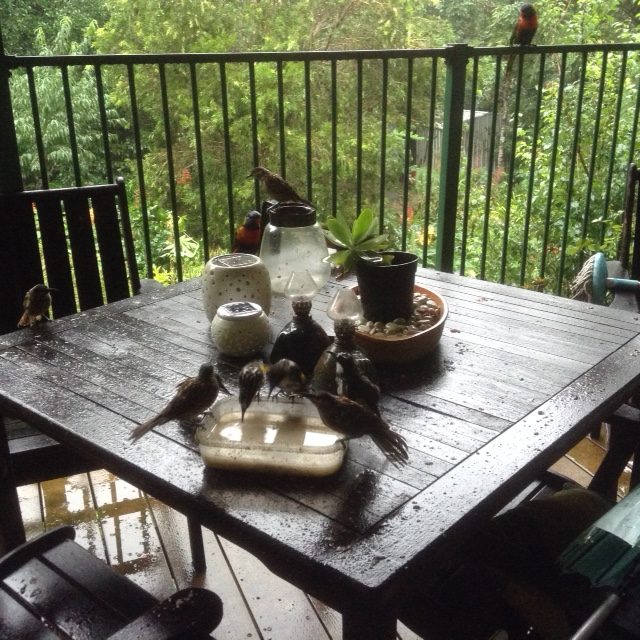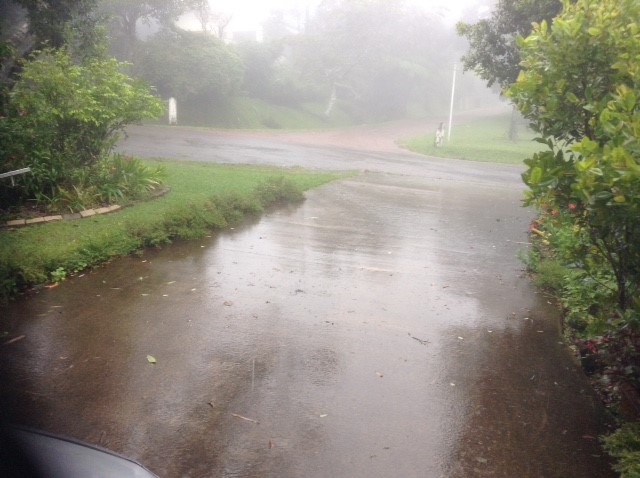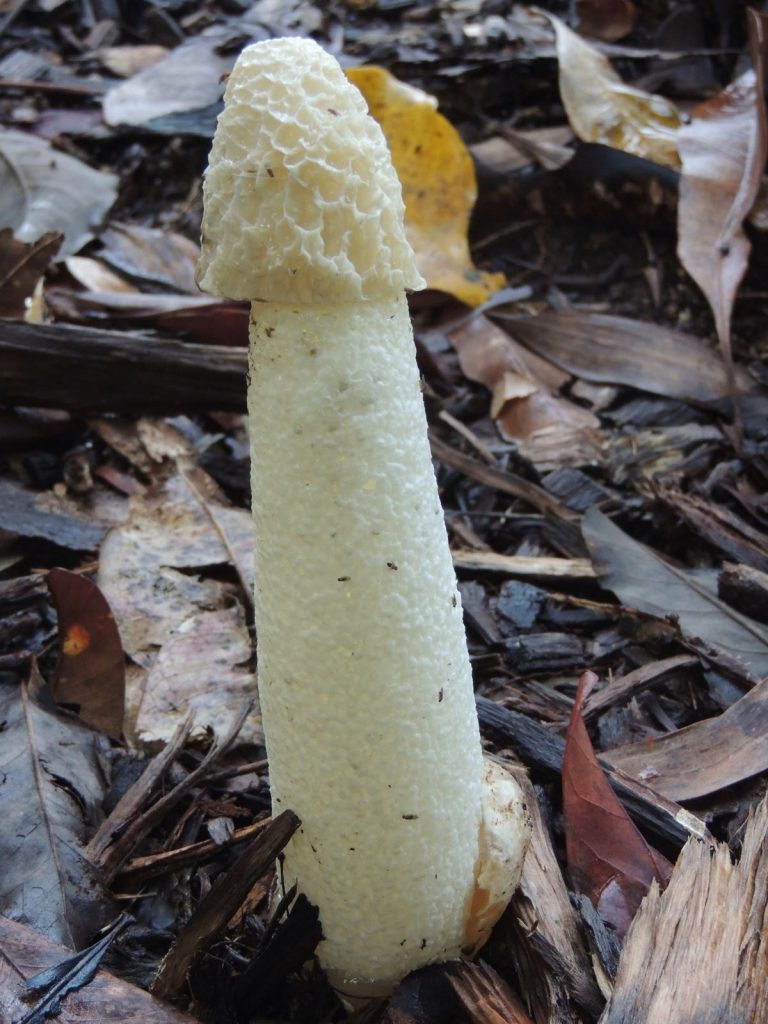Update Bulletin for Wednesday 6 February 2019
Well, it continues to pour rain here with little prospect of relief until the weekend at soonest, but after seeing the news footage of the catastrophic flooding in Townsville and some surrounding districts, we realise how very lightly Paluma has been affected by this extreme weather event. So far at least, there are no reports here of serious damage to property. Our hearts go out to those whose homes have been flooded and who have lost irreplaceable personal items.
In houses and in the community hall, pools of water lie on some floors, due to leaks in the roof, or ground-water seepage. Where possible, tarpaulins have been used to cover leaky roofs. These inconveniences occur to a greater or lesser degree every wet season; it is just lasting longer this time. A tree fell and smashed the gate at Gumburu and several small trees have fallen in and around the village. The ground is water-logged and rivulets and streams course over the road and down the slopes to join up with Benham’s Creek. Some driveways and sections of the road have been gouged out by the force of water. The official Bureau of Meteorology (BOM) website rainfall readings advise that 2521 mm of rain has fallen since Australia Day (26 January). Len Cook has kindly provided the BOM rainfall figures at the end of this bulletin (below).
Birds are starving and those of us who are feeding them have what seems like an open aviary from dawn to dark with literally scores of birds on the back decks and verandas, seeking food and shelter. Coming to my table are White-cheeked Honey-eaters, Macleay’s and Lewin’s Honey-eaters, Lorikeets, Satin Bower-birds, Cat-birds and Rifle-birds. Hunger overcomes their fear and the birds cling to my arms and shoulders as I fill the feeder trays. Unusually too, there is no fighting for supremacy at the feeder: all species are happy to share.

A few days ago the worst crisis was for the several smokers who had run out of cigarettes and/or tobacco. Suggestions that this was a good opportunity to give up smoking, or to roll tea leaves were greeted with disdain. Someone managed to procure tobacco so the situation was saved, temporarily.
Yesterday, some people from the Running River area, armed with shopping lists, ventured to Ingham via the Mt Fox Road. Their return was prevented by a land-slip on the Mt Fox Road.
I am very grateful to the number of absent Paluma residents who have rung, generously offering the contents of their pantries to those of us here, should our food supplies run out. We thank you all so much for your concern and generosity but hope, of course, that things will not drag on to that extent.
As has already been reported, engineers are trying to decide on the best way to remove a huge rock blocking the road about 1.5 km from the village. Two more giant rocks are poised on the up-slope ready to fall and as fast as one slip is cleared, another occurs elsewhere. Conditions are terribly dangerous for those attempting to clear the road, but they are trying to keep a narrow way open for use of emergency vehicles only. Otherwise the road remains closed.
So, we are here for the time being: keeping our sanity by taking long walks in the pouring rain, and getting together for coffee and gossip. Neil Appleton’s birthday offered an excellent opportunity for a very happy such gathering.
Update Bulletin by Colwyn Campbell
BOM Rainfall Figures for Paluma (Courtesy of Len Cook)
Saturday 26 January 2019…………………..93 mm
Sunday 27 January 2019……………………160 mm
Monday 28 January 2019………………….230 mm
Tuesday 29 January 2019………………….370 mm
Wednesday 30 January 2019…………….143 mm
Thursday 31 January 2019………………. 222 mm
Friday 1 February 2019…………………….261 mm
Saturday 2 February 2019……………….303 mm
Sunday 3 February 2019………………….175 mm
Monday 4 February 2019………………..384 mm
Tuesday 5 February 2019………………..180 mm
Total……………………………………………….2521 mm

















